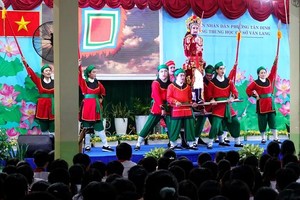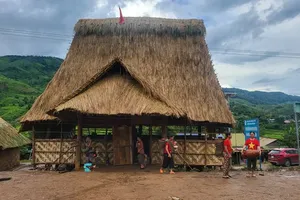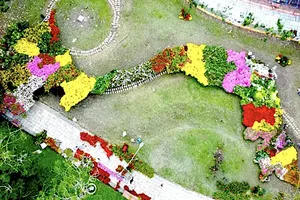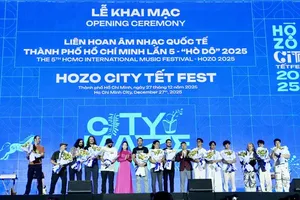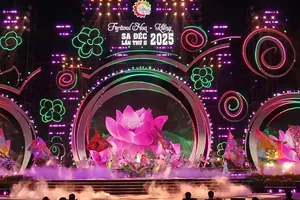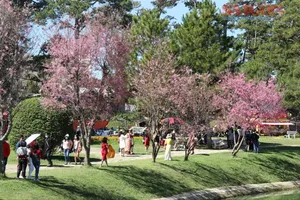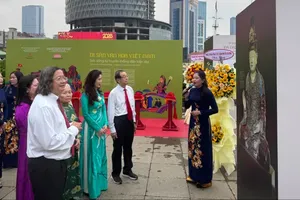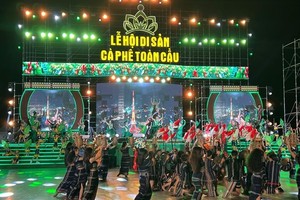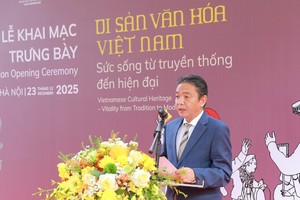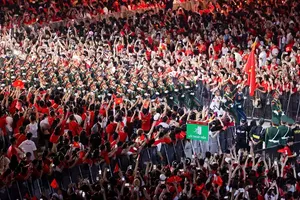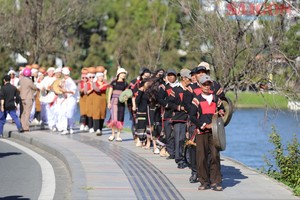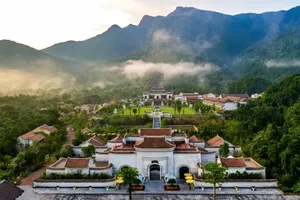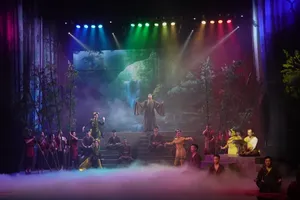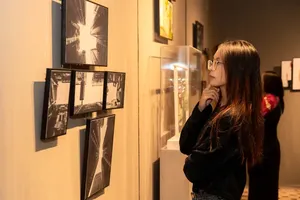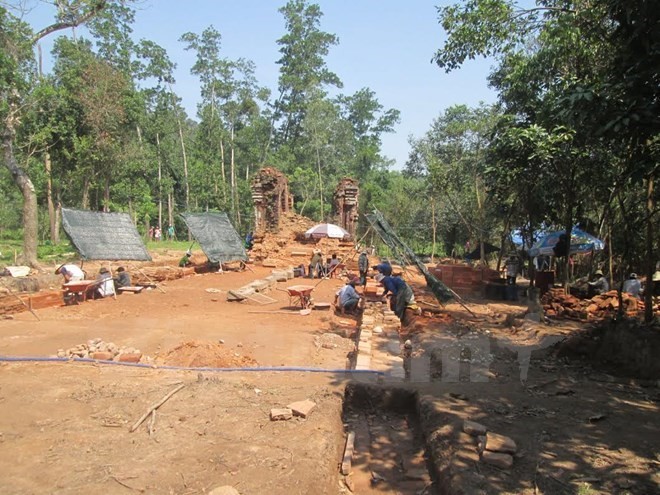
The road is 8 metres in width and located between two parallel walls built from terra-cotta bricks. It started at behind temple K but how long it is and when it was built remain a mystery. Experts believed that the road may be reserved for royal members and religious dignities when attending religious ceremonies at the sanctuary.
In addition to preserving temple K, Vietnamese and Indian experts decided to restore 50 metres of the unveiled road and the walls as they hold precious archaeological values. The remaining of the road is still hidden underground.
The excavation group also found several valuable artefacts, including two stone statues of lion-man, at the site.
Head of the My Son World Heritage site Management Board Phan Ho hoped that the scientists will soon reach conclusion on the road’s scale, purpose and significance, saying that the move will increase cultural values and unravel the mystery of the ancient Cham temples.
Once the religious and political capital of the Champa Kingdom, My Son Sanctuary is located in a hilly landscape in Duy Phu commune, Duy Xuyen district, about 70 km southwest of Da Nang city and 40 km from Hoi An city.
It comprises eight groups of 71 monument built throughout the 7th -13th centuries.
The first construction of My Son dated back to the 4th century under the reign of Bhadravarman for the worship of God Shiva-Bhadresvara. But later on, the temple was destroyed.
At the beginning of the 7th century, King Sambhuvarman had it rebuilt and rebaptised Sambhu-Bhadresvara. Each new monarch came to My Son after his accession to the throne for the ceremony of purification and to present offerings and erect new monuments, which explains why My Son is the only place where Cham art flourished without interruption from the 7th to 13th century.
The temples in My Son were built into groups that basically followed the same model. Each group was comprised of a main sanctuary (Kalan), surrounded by towers and auxiliary monuments. The Kalan, which is a symbol of Meru Mountain (centre of the universe, where the gods live), is dedicated to Shiva. The small temples are devoted to the spirits of the eight compass points. In the towers, topped with tiled, covered roofs, were stocked to the offerings and sacred objects of the pilgrims. Cham temples do not have windows, so they are very dark inside. Windows are found only in the towers.
Extensive research and restoration work to preserve the Cham architectural heritage have been carrying out since it became a world heritage site since 1999.
In addition to preserving temple K, Vietnamese and Indian experts decided to restore 50 metres of the unveiled road and the walls as they hold precious archaeological values. The remaining of the road is still hidden underground.
The excavation group also found several valuable artefacts, including two stone statues of lion-man, at the site.
Head of the My Son World Heritage site Management Board Phan Ho hoped that the scientists will soon reach conclusion on the road’s scale, purpose and significance, saying that the move will increase cultural values and unravel the mystery of the ancient Cham temples.
Once the religious and political capital of the Champa Kingdom, My Son Sanctuary is located in a hilly landscape in Duy Phu commune, Duy Xuyen district, about 70 km southwest of Da Nang city and 40 km from Hoi An city.
It comprises eight groups of 71 monument built throughout the 7th -13th centuries.
The first construction of My Son dated back to the 4th century under the reign of Bhadravarman for the worship of God Shiva-Bhadresvara. But later on, the temple was destroyed.
At the beginning of the 7th century, King Sambhuvarman had it rebuilt and rebaptised Sambhu-Bhadresvara. Each new monarch came to My Son after his accession to the throne for the ceremony of purification and to present offerings and erect new monuments, which explains why My Son is the only place where Cham art flourished without interruption from the 7th to 13th century.
The temples in My Son were built into groups that basically followed the same model. Each group was comprised of a main sanctuary (Kalan), surrounded by towers and auxiliary monuments. The Kalan, which is a symbol of Meru Mountain (centre of the universe, where the gods live), is dedicated to Shiva. The small temples are devoted to the spirits of the eight compass points. In the towers, topped with tiled, covered roofs, were stocked to the offerings and sacred objects of the pilgrims. Cham temples do not have windows, so they are very dark inside. Windows are found only in the towers.
Extensive research and restoration work to preserve the Cham architectural heritage have been carrying out since it became a world heritage site since 1999.

